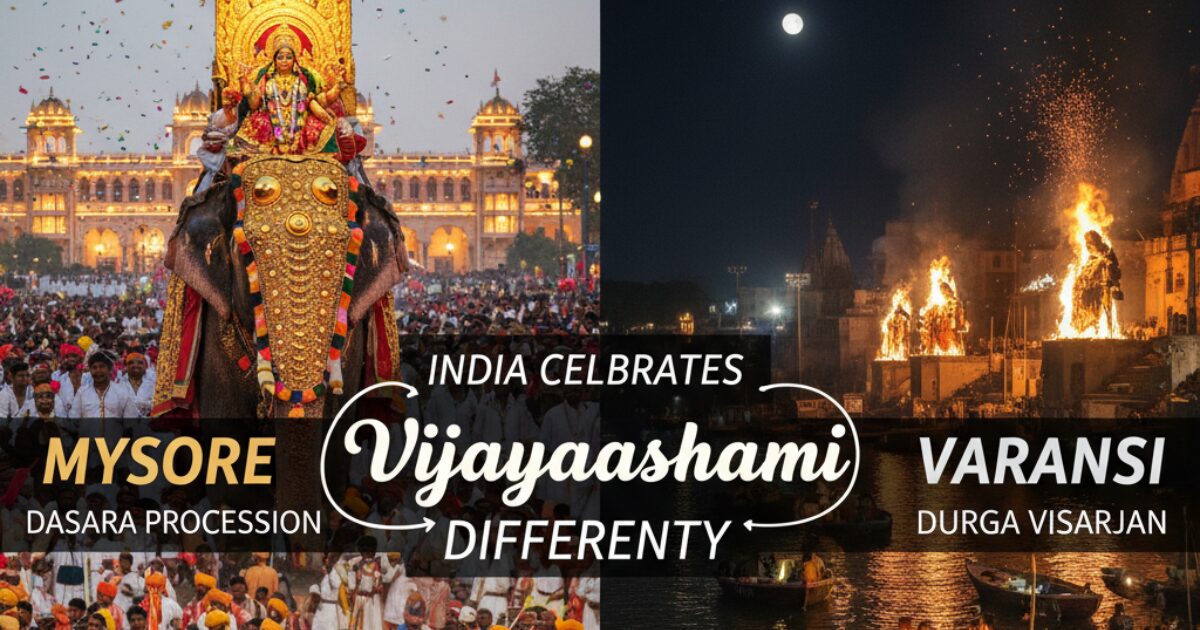
Vijayadashami, also known as Dussehra, is one of the most vibrant and widely celebrated festivals in India. While the essence of the festival remains rooted in the triumph of good over evil, its celebration varies dramatically across the country. From the regal processions in Mysore to the spiritual rituals in Varanasi, Vijayadashami offers a rich tapestry of traditions, each reflecting the local culture, history, and community spirit. Understanding these regional differences can make this festival even more meaningful for those who celebrate or wish to learn about it.
Vijayadashami marks the victory of Lord Rama over Ravana and Goddess Durga over Mahishasura. It symbolizes the eternal triumph of virtue over vice and the importance of moral righteousness in life. Across India, the festival is celebrated at the end of Navratri, the nine-night period dedicated to the Goddess. However, the local customs, rituals, and grandeur differ significantly from region to region, offering a glimpse into India’s cultural diversity.
Mysore, in the southern state of Karnataka, is famed for hosting one of the grandest Vijayadashami celebrations in India. Known as the Mysore Dasara, the festival draws tourists and devotees from across the globe.
Royal Procession: The festival is traditionally associated with the Wodeyar royal family. The grand procession includes beautifully decorated elephants, horses, and folk dancers, showcasing Karnataka’s rich heritage.
Illuminated Mysore Palace: The palace is illuminated with nearly 100,000 lights, creating a mesmerizing spectacle visible from miles around.
Cultural Programs: Traditional music, dance performances, and classical art exhibitions are organized throughout the city.
Torchlight Parade: The evening torchlight parade adds a vibrant and ceremonial touch to the celebrations.
Mysore’s celebrations are deeply influenced by the city’s royal history, offering visitors a blend of spirituality, culture, and visual grandeur.
On the other hand, Varanasi, one of the oldest living cities in the world, celebrates Vijayadashami with a strong spiritual focus. Here, the festival emphasizes devotion, rituals, and community gatherings along the sacred Ganges River.
Ayudha Puja: Tools, books, musical instruments, and vehicles are worshipped to invoke divine blessings for success and prosperity.
Ramlila Performances: Local theatres and community spaces organize theatrical performances of the Ramayana, culminating in the symbolic defeat of Ravana.
Ganga Aarti Celebrations: Devotees gather at ghats for elaborate aarti ceremonies, offering prayers and floating lamps on the river to honor divine victories.
Community Participation: Families and local groups actively participate in ritualistic processions, emphasizing moral lessons and traditional storytelling.
Varanasi’s Vijayadashami reflects devotion and cultural heritage, offering a deeply spiritual experience that contrasts with the royal pageantry of Mysore.
While Mysore and Varanasi stand out for their unique celebrations, other parts of India have their own distinctive ways of observing Vijayadashami.
Ravana Dahan: Burning effigies of Ravana is a widespread tradition in states like Uttar Pradesh, Punjab, and Haryana.
Ramlila Performances: Theatrical enactments of Lord Rama’s victory are common in cities and villages alike.
Durga Puja Culmination: In West Bengal, Vijayadashami marks the immersion of Goddess Durga idols in rivers or lakes, symbolizing her return to the divine abode.
Cultural Parades: Odisha and Assam also organize community fairs, processions, and artistic performances.
Ayudha Puja Rituals: Karnataka, Tamil Nadu, and Andhra Pradesh emphasize the worship of tools, vehicles, and instruments.
Decorative Elements: Colorful rangoli, floral decorations, and elaborate lighting are integral to the celebrations.
Despite the regional variations, several symbolic themes remain central to Vijayadashami:
Victory of Good Over Evil: The destruction of Ravana or Mahishasura represents the triumph of morality, courage, and righteousness.
Renewal and Prosperity: Tools and instruments worshipped during Ayudha Puja symbolize productivity and blessings for a prosperous life.
Community and Cultural Unity: The festival brings people together through collective celebration, storytelling, and traditional performances.
For travelers or festival enthusiasts, experiencing Vijayadashami in different regions can be a transformative experience:
Plan Ahead: Check local schedules for processions, performances, and rituals.
Participate Respectfully: Observe customs, seek permission for photography, and respect local traditions.
Try Local Cuisine: From Mysore Pak in Karnataka to Bengali sweets like Sandesh, each region offers unique festive flavors.
Attend Cultural Events: Engage with Ramlila performances, music concerts, and craft fairs to fully immerse yourself.
Vijayadashami is more than a festival; it is a celebration of India’s rich cultural diversity. From Mysore’s royal grandeur to Varanasi’s spiritual rituals, each region adds its own flavor, symbolism, and tradition to this auspicious day. Whether you witness the dazzling palaces, participate in sacred river ceremonies, or enjoy community performances, Vijayadashami offers a unique insight into India’s heritage.
Exploring these differences helps us appreciate the deeper significance of the festival and the ways in which communities celebrate the triumph of good over evil. Share your favorite Vijayadashami experiences or regional stories in the comments below and inspire others to explore the rich diversity of this festival.
©Famous India Blog. All rights reserved.
Creativity By Needinfotech